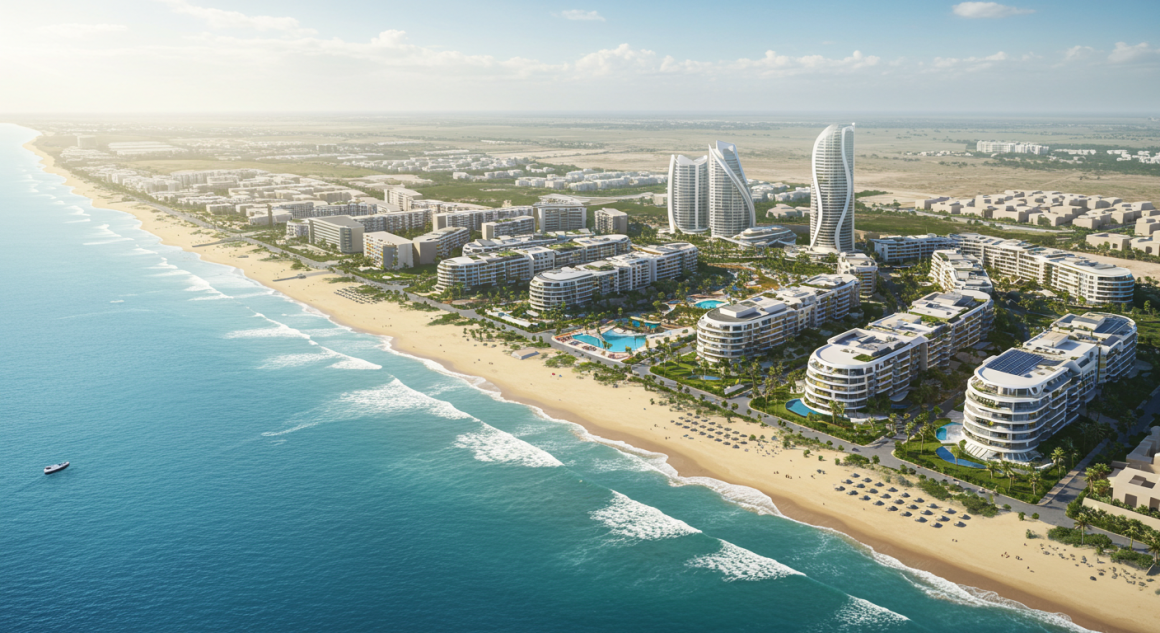Off the coast of Ndayane, Senegal, where the Atlantic whispers against untouched shores, a new kind of tide is rising. It doesn’t come from the moon’s pull, but from human ambition, global vision, and the steady churn of the dredger Willem Van Rubroeck. The $1.2 billion Port of Ndayane isn’t merely a construction project; it’s a nation’s declaration of intent, a physical manifesto written in steel, concrete, and deep-water channels. DP World’s Sultan Ahmed bin Sulayem didn’t just sign a contract; he planted a flag on the horizon of African potential. This port is Senegal’s answer to its own urban constraints — the elegant, historic Port of Dakar, now bursting at its seams, hemmed in by the vibrant chaos of the capital. Ndayane is freedom. It’s 840 meters of pristine quay waiting to embrace the world’s largest container ships, vessels that dwarf football fields, carrying the hopes of exporters from Bamako to Brazzaville. But the vision stretches far beyond the water’s edge. It’s in the economic zone planned near Blaise Diagne International Airport — a synergistic hub where cargo leaps from ship to plane, where factories hum beside logistics centers, where a Senegalese entrepreneur can design a product, manufacture it locally, and have it on shelves in London or Lagos within days. The British International Investment’s projection — a 3% GDP boost, $15 billion in trade value by 2035 — isn’t cold economics. It’s the promise of 22,000 new jobs directly tied to trade, of 2.3 million livelihoods transformed across the nation. It’s the fisherman’s son in Thiès learning logistics management, the young woman in Dakar launching an e-commerce platform targeting European markets, the farmer in the Peanut Basin seeing his harvest reach global consumers at fair prices. Prime Minister Ousmane Sonko’s meeting with Bin Sulayem wasn’t just protocol; it was a handshake sealing a covenant between a global logistics giant and a nation ready to leap. The dredger’s work, carving a 5-kilometer channel through the seabed, is symbolic. It’s clearing a path — not just for ships, but for Senegal’s future. This port won’t just handle containers; it will handle aspirations. It will turn “Made in Senegal” from a local label into a global brand. As the first piles are driven into the seabed, they aren’t just foundations for a quay; they’re keystones for a new West African renaissance, rising, wave by determined wave, from the Atlantic shore.
FlashNews:
The Silent Handshake: How DP World is Redrawing Africa’s Economic Map, One Port at a Time
From Sharjah’s Soil to the Stars: The Unlikely Path of the UAE’s Scientific Ascent
Eid Al Etihad: More Than a Celebration, A Living Tapestry of Progress
The Algorithmic Oasis: Why the World’s Brightest Minds Are Choosing Abu Dhabi’s AI Desert
Senegal’s New Shoreline: How a $1.2 Billion Dream is Rising from the Atlantic Waves
Beyond the Runway: The Unspoken Dialogue Between UAE and China’s Skies
The Quiet Revolution in Sharjah’s Sands: How a Petroleum Department Visit Whispered the Future of Energy
When Abu Dhabi Hosted the World’s Wheels: How a Desert City Became the Stage for Urban Cycling Glory
Masdar City’s Silent Scholars: Where AI Dreams Take Root Under the Abu Dhabi Sun
Dubai Cultural Expo: A Platform for Creativity and Global Intellectual Exchange
Abu Dhabi to Host Global eSports Championships in 2025
UAE Strengthens International Cooperation in Space Exploration with Global Agencies
UAE Adopts Artificial Intelligence to Advance Preventive Healthcare Services
UAE Strengthens Its Position as a Global Investment Destination Through Innovation Initiatives
UAE Air Force Commander meets Chinese defence official
Noor Dubai expands humanitarian health campaigns in Philippines
2024 UCI Urban Cycling World Championships: Spain win mixed team event in trials
Mohamed bin Zayed University of Artificial Intelligence opens graduate admissions for class of 2025
Sultan bin Ahmed visits Petroleum Department
Living in UAE
Senegal’s New Shoreline: How a $1.2 Billion Dream is Rising from the Atlantic Waves
October 18, 2025September 27, 2025


Leave a Reply
You must be logged in to post a comment.